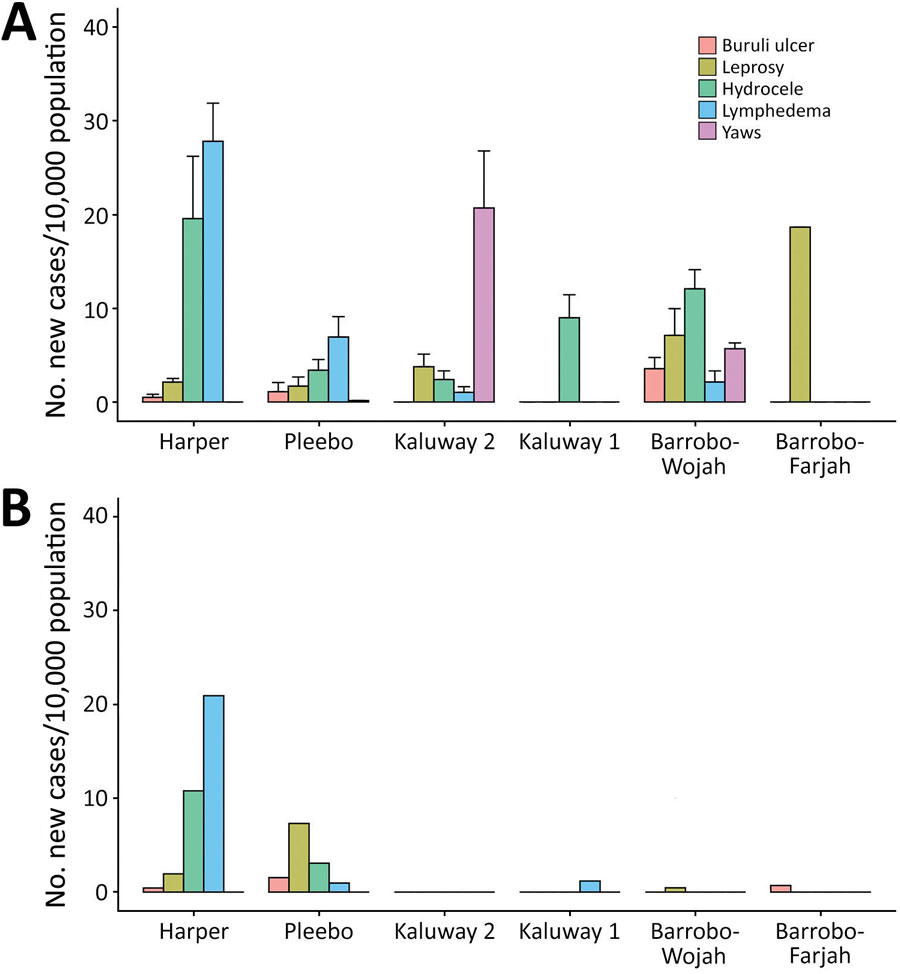Volume 28, Number 9—September 2022
Research
Quantifying Population Burden and Effectiveness of Decentralized Surveillance Strategies for Skin-Presenting Neglected Tropical Diseases, Liberia
Figure 5

Figure 5. Comparison of cases of skin-presenting neglected tropical diseases before and after survey Maryland County, Liberia. A) Survey cases previously unknown to the health system; B) annual new case detection rates from routine health system records extracted from the 12 months before survey implementation. Note that plots are comparing point prevalence (A) with annual new case detection rates (B). Routine diagnosis is limited to clinical suspicion for Buruli ulcer. If survey estimates are extended to include all clinically suspected cases of Buruli ulcer, we estimate a countrywide prevalence of 32.4 (95% CI 27.4–37.3) previously unknown cases/10,000 persons.
1These authors contributed equally to this article.
Page created: July 02, 2022
Page updated: August 19, 2022
Page reviewed: August 19, 2022
The conclusions, findings, and opinions expressed by authors contributing to this journal do not necessarily reflect the official position of the U.S. Department of Health and Human Services, the Public Health Service, the Centers for Disease Control and Prevention, or the authors' affiliated institutions. Use of trade names is for identification only and does not imply endorsement by any of the groups named above.